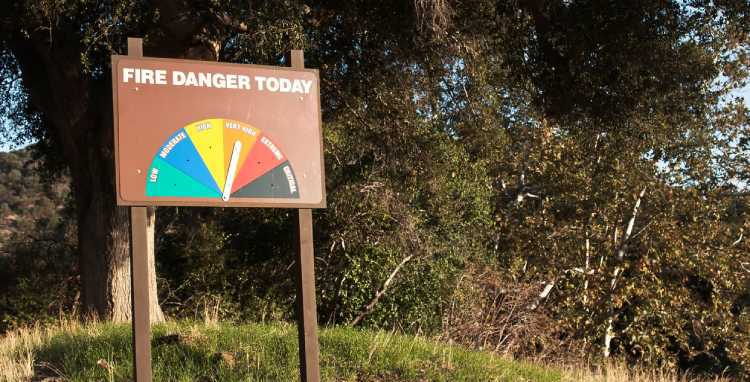How to Prepare Your Property to Improve Wildfire Resilience

Inspect Your Home and Be Better Prepared for California’s Wildfires
Recent events in Northern California confirm that a wildfire can be devastating enough to wipe out an entire town. With the recent rains, the 2018 fire season may be ending, but by next spring the next season will begin. It is never too early to implement a variety of actions in case a local fire threatens your property next year. By taking some precautionary measures now, you could save your home; and more importantly, such home safety measures could save the lives of those in your household.
Defensible Space
Your property’s defensible space (the area immediately surrounding your home) should be prepared to offer as much protection as possible. Additionally, you should ensure that if your property does experience a fire, firefighters and other rescue workers have easy access to your home and yard.
Glass Doors and Windows
If you have a wooden deck adjacent to your home, you should limit the amount of glass on that side of the building. Unless they are made from tempered glass, windows and glass doors are vulnerable to breaking from the intense heat of a fire. Once that happens, the fire can easily enter your home. For windows that do face a deck, you can take a few steps to lower the risk. These actions include installing bronze window screens, using dual-paned windows, and requesting tempered glass for doors and windows. Skylights should be treated with the same precaution as windows.
Wood Management
Wood is highly flammable, making it a less desirable choice for fences. A metal fence decreases the chance of a wildfire spreading throughout your property. Another useful strategy is to install cement or gravel patio instead of a wooden deck. If you opt for a wooden deck or fence, use wood that is as thick as possible. A fire retardant type may also be an advisable option. While the deck boards should be placed loosely enough to allow for ventilation, they should not be positioned so loosely that flames can move quickly and easily from top to bottom. Also, avoid storing firewood near any wooden structure on your property.
Vents
Vents on your home that have no screen can allow embers from a nearby fire to enter the structure. Appropriate screens may be installed on such vents. The screens should be made of wire mesh that is non-combustible and they should not contain plastic components.
Vegetation
Vegetation and trees on your property can be strategically placed to avoid damage. Trees should not be located within six feet of your home. Plants should be positioned in clusters, instead of being installed in a continuous path that leads to your home. Don’t allow plants to touch the siding or windows. Remove dead plants from the area, and keep living plants adequately watered.
Siding, Gutters, and Roofs
Siding should be made from a non-combustible material, and gaps in the siding may be filled with caulk for extra protection. Gutters and roofs should be cleared of debris and vegetation on a regular basis. Birds’ nests should also be cleared away regularly. Install gutter guards, and use metal flashing at the juncture between two sloped roofs.
Home Inspectors Help you Identify Potential Issues with Your Home
Potential wildfires may be a frightening prospect, but you can take many preventative measures to maximize safety. Another way to ensure that your property stays in top shape is to hire a qualified home inspector. HomeGuard Incorporated offers home and termite inspections in locations such as the Bay Area, Sacramento, Novato, San Jose, and San Diego. Call us today at (855) 331-1900, or reach us via our online contact form.




